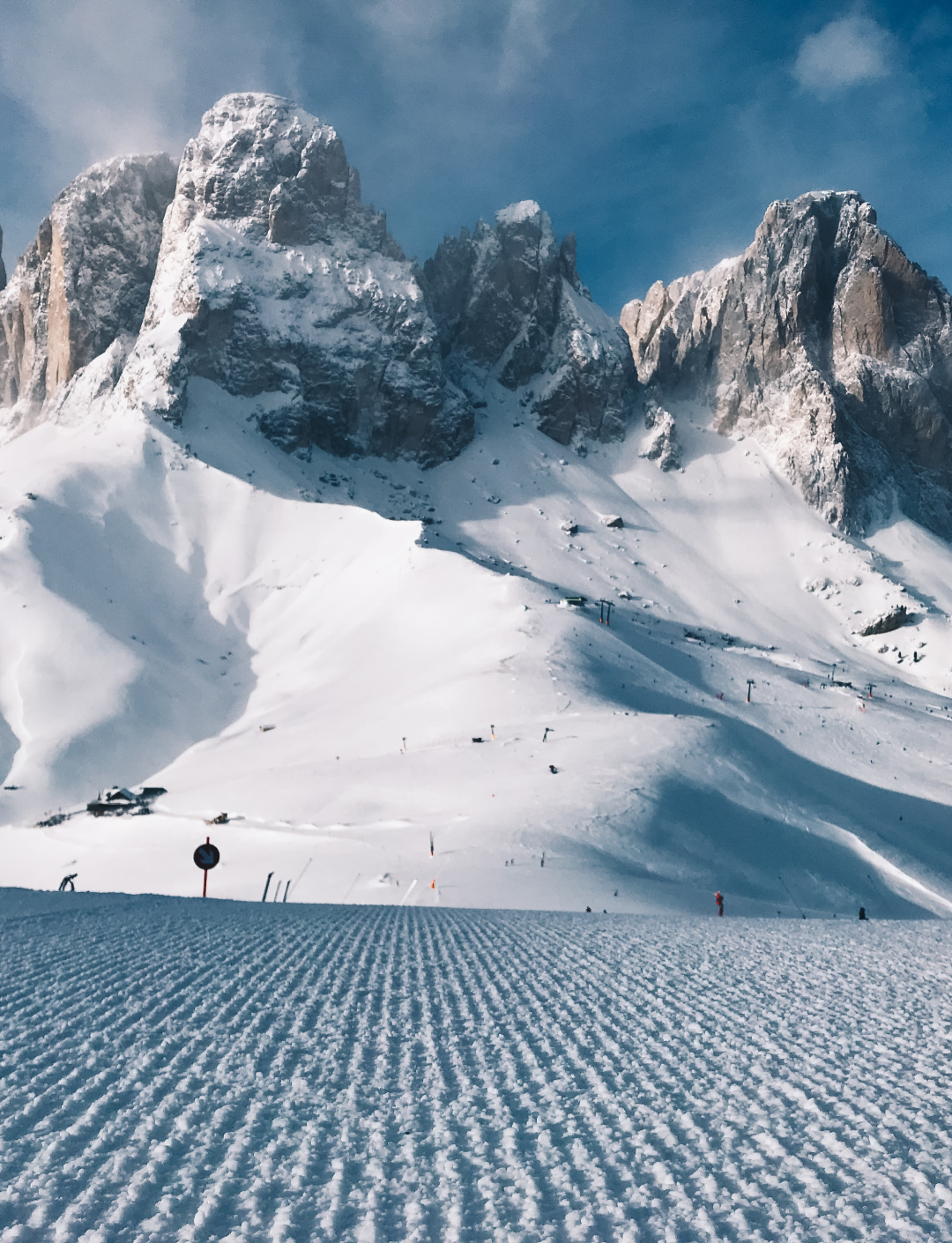
Image: Kcxd, Flickr
Downhill Skiing
When you think of skiing, this is probably the first style that comes to your mind. Downhill skis is also known as alpine skiing, defined by a relatively quick descent down the mountain on a groomed resort run, although experienced skiers may opt for traversing narrow paths through the woods or testing their skills on moguls. In this type of skiing, your feet are strapped into stiff boots bound to the ski at the toe and heel. Downhill skis can vary in length and shape depending on your size, experience, and comfort level. Downhill skiing is ideal for adventurous personalities and those that enjoy going fast while remaining in the relatively controlled mountain conditions of a resort (i.e., without avalanche hazards). Chairlifts and other mechanical means are used to transport skiers to the top of the mountain, from which point they can choose to descend runs of varying difficulty, ranging from beginner to expert. Ski poles are often used to facilitate balance and turning. Most resorts have their own form of snow-making, allowing downhill skiers the opportunity for skiing even when an area hasn't received a lot of natural snow.Backcountry Skiing
This type of skiing is for the truly adventurous at heart. It also requires a mastery of downhill skiing, as backcountry skiing is quite simply downhill skiing outside of a controlled environment. Say goodbye to groomers — in the backcountry, you are left to create your own lines down the mountain while effectively avoiding trees, rocks, and other hazardous conditions. Known as off-piste skiing in Europe, backcountry skiing promises fresh powder and serves as an escape from the crowds, but requires a high level of skill. Powder skis are coveted in unmarked terrain. These type of skis — also known as "fat skis”— are wide on both ends and underfoot, serving to effectively cut through fresh powder.Heli-skiing or Cat-skiing
When backcountry skiing is no longer exciting enough for you, step up your game to the next level. Snowcats and helicopters will transport you to the top of otherwise inaccessible runs for the downhill journey of a lifetime. Cat-skiing and heli-skiing require serious expertise and knowledge of mountain hazards, such as avalanches. Resorts often have cat-skiing options that are relatively affordable. Taking a helicopter into the backcountry is going to be expensive — but offers phenomenal views and the best opportunity to tear up fresh powder.Cross County Skiing
If you're not a fan of going fast or tearing down slopes, cross country skiing is a great alternative. This aerobically demanding activity allows you to get out and enjoy nature on a pair of skis — without chairlifts or steep slopes. Cross country skiing takes you across relatively flat terrain, although you have the option to ascend gentle inclines and in turn ski back down them. This type of skiing is also known as Nordic skiing and utilizes skis that are long and thin. Your feet are strapped into boots attached to bindings, but your heel that remains free for ease of forward movement. Ski poles are used to help propel your body forward. This is the most difficult form of skiing in terms of endurance and requires relatively good physical shape. The best part? It is comparatively affordable to resort skiing and allows you to get out and experience nature at your own pace.Image: Navid Haghnegahdar, Flickr




